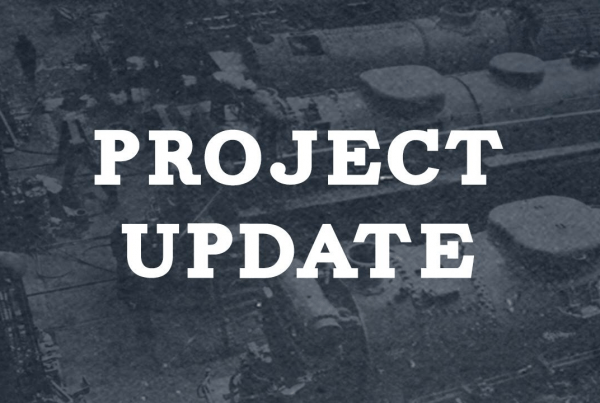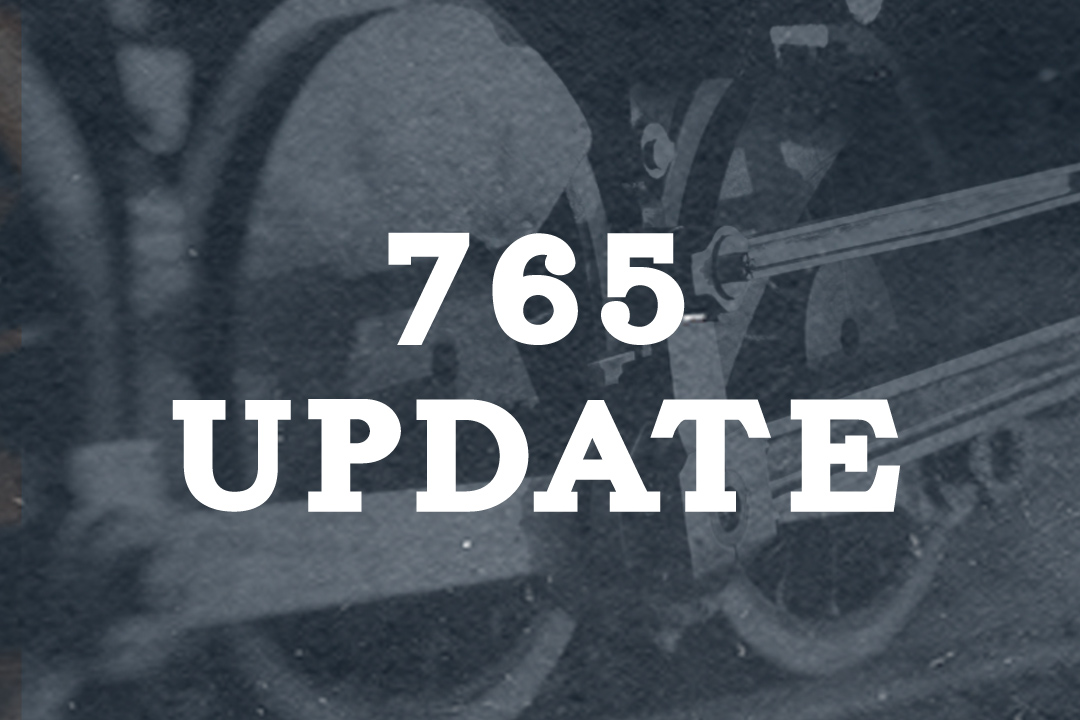Submitted by Steve Winicker.
LAST WEEKENDS SHOP ACTIVITY
Friday was spent moving things around, so the furnace could be installed this coming week. As it stands we may have heat weekend after this coming weekend. Mr. Nitza worked on installing a block heater in the Plymouth. Also spent some time moving and cleaning around #1s cab. Additional time was spent numbering and sorting jacketing that has come off the locomotive. Saturday, more moving, sorting, lawn mowing, painting. Sunday the Taylors and I removed more jacketing from the locomotive.
UPCOMING ACTIVITIES
The plan is to continue work on removing the 765 jacket. Slow going because one must figure out what is holding it in place, often small rivets placed in nearly inaccessible spots. I would like to work on piping air to the north side of the building. You are likely to find the shop without heat but with a new furnace installed awaiting the final electric hook ups. The annual meeting is coming next week. Hope to see you there. (or at the shop lots of fun, though chilly at times)
SAFETY SENSE
PPE…Eye Protection
Every day an estimated 1,000 eye injuries occur in American workplaces. No matter where we work, flying particles, dusts, splashes or flying objects are apt to expose us to potential eye injury. Fortunately, we can protect against these hazards by using the appropriate protective eyewear for our jobs.
A survey by the Labor Department’s Bureau of Labor Statistics (BLS) of about 1,000 minor eye injuries reveals how and why many on-the-job accidents occur:
· Not wearing eye protection. BLS reports that nearly three out of every five workers injured were not wearing eye protection at the time of the accident.
· Wearing the wrong kind of eye protection for the job. About 40 of the injured workers were wearing some form of eye protection when the accident occurred. These workers were most likely to be wearing eyeglasses with no side shields, though injuries among employees wearing full-cup or flat-fold side shields occurred, as well.
What Causes Eye Injuries?
· Flying particles. BLS found that almost 70% of the accidents studied resulted from flying or falling objects or sparks striking the eye. Injured workers estimated that nearly three-fifths of the objects were smaller than a pin head. Most of the particles were said to be traveling faster than a hand-thrown object when the accident occurred.
· Contact with chemicals caused one-fifth of the injuries.
Other accidents were caused by objects swinging from a fixed or attached position, like tree limbs, ropes, chains, or tools which were pulled into the eye while the worker was using them.
Society PPE rules and regulations are in place for a reason and that is your safety and the prevention of injuries. The recent video of re-railing the 765 pointed out that not everyone is taking the PPE rules seriously. There were many opportunities for injuries to occur and the fact that there weren’t any injuries was sheer luck. However, a safety program based upon luck is doomed to failure and that means someone is going to be injured or worse. Don’t let that injured person be YOU, follow the safety rules.


